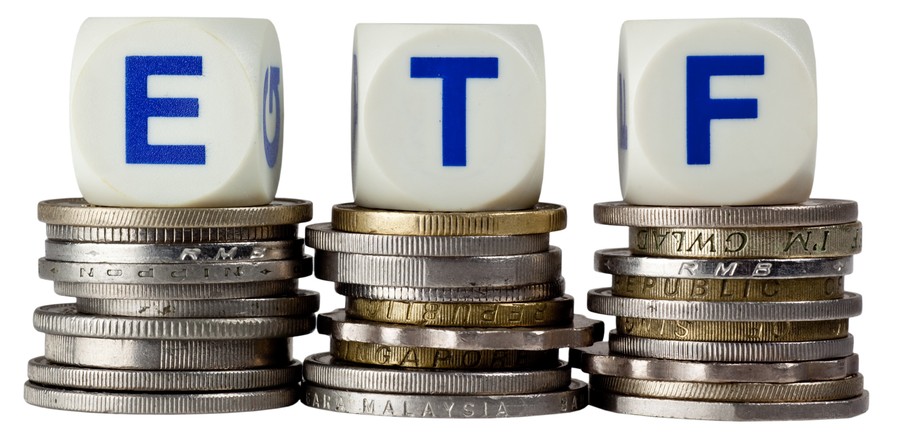Business and Economy
Understanding ‘smart beta’ ETFs
“Smart beta” is far from a new idea, but in the world of exchange traded funds (ETFs), it is the latest buzzword. The industry is slowly moving away from offering passive strategies alone to providing semi-active or rules-based strategies as alternatives to the traditional market capitalization-weighted index strategies that have made ETFs so popular. These new approaches seek to outperform the market or manage risk, and have come to be known broadly as “smart beta” funds.
Here’s a look at how they work and some of the strategies they use.
What is smart beta?
Smart beta has come to represent an alternative to broad market exposure by focusing on single or multiple non-market factors.
In the financial jargon, “beta” is most commonly used to represent sensitivity to market movements. In fact, beta can represent sensitivity to many other factors, including volatility, momentum, or company-specific fundamentals such as dividends, revenue, or price-to-earnings ratios.
Another aspect of smart beta strategies is the weighting scheme used. While a traditional index may assign holdings’ weights based on the market capitalization of the individual holdings, a smart beta index assigns weights based on other factors. So if, for example, the index factor is dividend payout, a larger weight will be assigned to the highest dividend payer in the pool. By assigning weights based on these factors, beta strategies focus on the economic drivers or the characteristics of the ETF’s underlying holdings rather than the market size.
Many of the smart beta indices are derived from the traditional market capitalization-weighted index. The smart beta version uses the pool of holdings from the same index to apply a rules-based methodology. For instance, iShares MSCI EAFE Minimum Volatility Index Fund (TSX: XMI) is the smart beta version of the iShares MSCI EAFE Index Fund (TSX: XIN). The former gives higher allocation to lower volatility international equity stocks drawn from the MSCI EAFE index.
Smart beta may lead… or lag
Although investors expect smart beta strategies to outperform the market, depending on the market conditions, the smart beta might lead or lag the traditional market index. By definition, riskier factors should be rewarded with higher returns; however, this is not always true.
Here is case in point. Low volatility became a very popular strategy in 2012 as investors sought to manage risk exposure while gaining from upsides in equity markets. A good number of low-volatility ETF products were created, and the strategy attracted a big inflow of money. Given their lower risk, the strategy was supposed to lag the counterpart, but it did not. As in any other market, demand and supply also play a role in determining prices.
Smart beta strategies
Here are some examples for the most common smart beta strategies in the Canadian and U.S. ETF space.
Dividend. Some smart beta strategies focus on fundamentals, including dividend policy and sustainability over the long term. For example, RBC recently launched its Quant Dividend lineup, a rules-based, multi-factor strategy that offers investors geographic exposure. Offerings include the RBC Quant Canadian Dividend Leaders ETF (TSX: RCD), RBC Quant U.S. Dividend Leaders ETF (TSX: RUD) , and RBC Quant EAFE Dividend Leaders ETF (TSX: RID). These ETFs offer exposure to Canadian, U.S., and EAFE markets while targeting companies with strong balance sheets and the potential for dividend growth.
Fundamental. Fundamental-weighted indices include factors such as company revenue, cash flow, and book value among others. For example, Invesco PowerShares offers ETFs that follow the FTSE RAFI family of fundamental indices. The FTSE RAFI methodology has been adopted by PowerShares FTSE RAFI Canadian Fundamental ETF (TSX: PXC) in the Canadian market and by PowerShares FTSE RAFI U.S. 1000 Portfolio ETF (NYSE: PRF) in the U.S.
Momentum. A momentum strategy uses the recent price performance of a stock to assign a momentum score. The idea behind a momentum strategy is to hold the stocks with the best return over the previous few months. For example, First Asset incorporates the momentum strategy in two of their ETF offerings with exposure to the Canadian and U.S. markets. First Asset Morningstar Canada Momentum Index (TSX: WXM) and First Asset Morningstar U.S. Momentum Index ETF (TSX: YXM) seek to replicate the Morningstar’s momentum indices, which incorporate both price and earnings momentum.
Earnings quality. An earnings-quality strategy looks at growth and leverage factors among others to target companies with growing earnings and financial soundness. U.S. based Market Vectors MSCI International Quality ETF (NYSE: QXUS) and Market Vectors MSCI Emerging Markets Quality ETF (NYSE: QEM) target international and emerging market companies with a high return on equity (ROE), stable annual earnings growth, and low financial leverage.
Minimum volatility. This strategy typically seeks to minimize the variance of the portfolio by giving higher allocations to the stocks with lower risk as measured by standard deviation. For example, the PowerShares S&P/TSX Composite Low Volatility Index ETF (TSX: TLV) seeks to replicate the performance of the S&P/TSX Composite Low Volatility Index, which tracks the 50 stocks with lowest volatility over the previous 252 trading days.
Some volatility strategies use “beta” instead, because it measures the stock sensitivity to market movements. With exposure to the U.S. equity market, BMO Low Volatility U.S. Equity ETF (US Dollar Units) (TSX: ZLU.U) is a good example of a strategy that assigns higher weights to securities with lower betas.
Courtesy of Fundata Canada Inc. © 2014. Maria Fernanda Parra is Senior Analyst, Analytics & Data, at Fundata Canada Inc. Investments mentioned are not guaranteed and carry risk of loss.






















